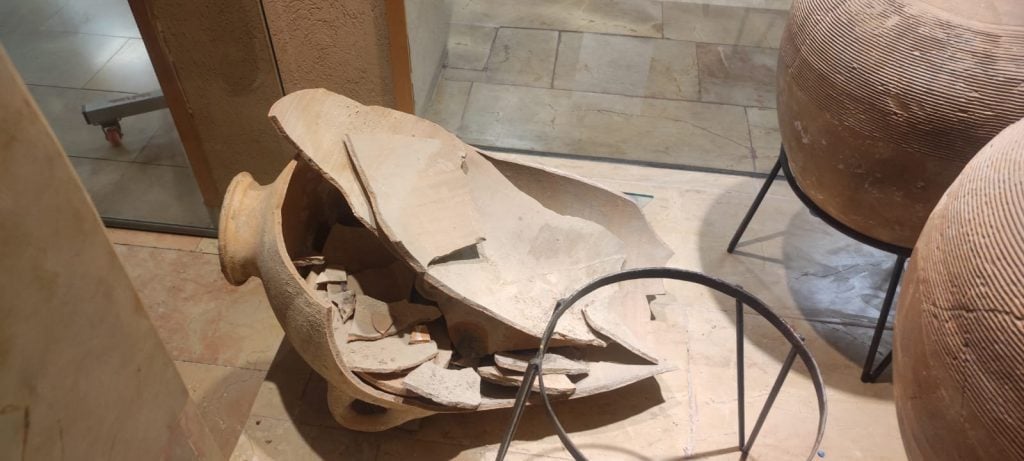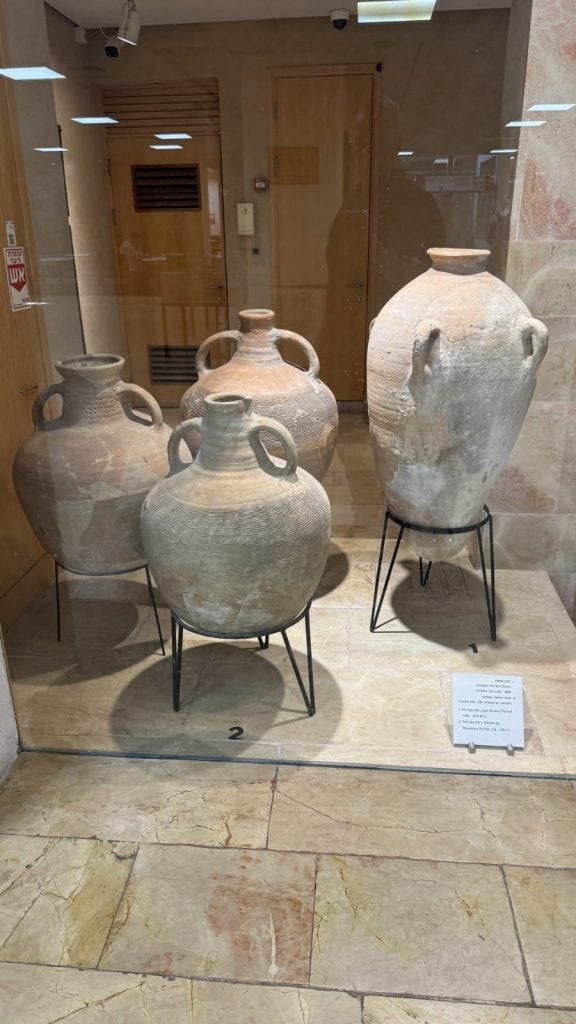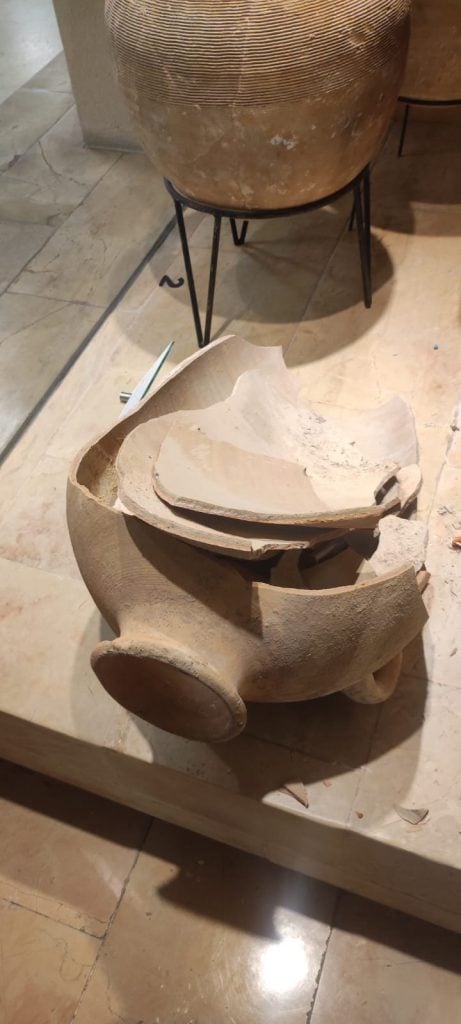Art & Exhibitions
Oops! Boy Accidentally Shatters a 3,500-Year-Old Vase at Israeli Museum
The boy's curiousity to see inside the vessel got the better of him. His father expressed "shock" at what his son did.

The boy's curiousity to see inside the vessel got the better of him. His father expressed "shock" at what his son did.

Eileen Kinsella

An unfortunate incident occurred recently at the Hecht Museum in Haifa, Israel when a four-year-old boy accidentally shattered a 3,500-year-old vase. Despite the damage, the museum’s leaders and staff almost immediately invited the boy and his family back for a visit.
“On a busy day at the museum, with many people around, the young boy had managed to slip unnoticed onto the ancient jars’ platform near the entrance, eluding the security guard’s attention,” said Dr. Inbal Rivlin, the museum’s general manager.
The damage was discovered just a few moments after the incident occurred and the vase was shattered and laying in pieces on the floor.

Image courtesy Hecht Museum’s staff. Haifa, Israel.
The child’s father, identified only as “Alex” in a BBC report, said his son had “pulled the jar slightly” because he was “curious about what was inside”, causing it to fall. Alex also said he was “in shock” when he saw his son standing near to the broken jar and at first did not believe that his son had caused the damage.
The vessel is dated to the Middle Bronze Age, between 2200–1500 BCE, and predates the time of King David and King Solomon. It is characteristic of the Canaan region, according to a statement from the museum. The jar was intended for the storage and transport of local supplies, mainly wine and olive oil. Similar jars have been found in archaeological excavations, but most were found broken or incomplete.
“The jar on display at the Hecht Museum, however, was intact, and its size made it an impressive find, positioned at the entrance of the museum,” said Rivlin, adding that its condition and rarity made it “priceless.”
The museum has called in Roy Shafir, a specialist in conservation from the University of Haifa’s School of Archaeology and Marine Cultures, to restore the work.
“Given the photographic documentation of the jar and familiarity with its form, the jar will be returned to its place in a short time,” Rivlin said. “The Hecht Museum will also take the opportunity to document the conservation work so that it can be presented to the public as well—so soon the jar will be visible again, along with the work that facilitated its ‘rescue.’”
It’s not the first time the museum has had to have a work restored after being damaged by a visitor. A few years ago, an Anthropoid ceramic coffin (an ancient Egyptian burial casket), placed on an end platform at the museum, was knocked by a visitor. The damaged part was quickly recovered and restored, said Rivlin.

Image courtesy Hecht Museum’s staff. Haifa, Israel.
There have been instances where display items are intentionally damaged, and such cases are treated “with great severity, including involving the police,” Rivlin said.
Police were not needed in this case, given that it was an accident. In fact, Rivlin publicly invited the child to visit the museum again and to witness the restored jar. The family has agreed to the invitation and they will be visiting the museum for a specially organized tour.
The museum expects the pottery piece will be back on display—with an updated insurance plan—in roughly two weeks.